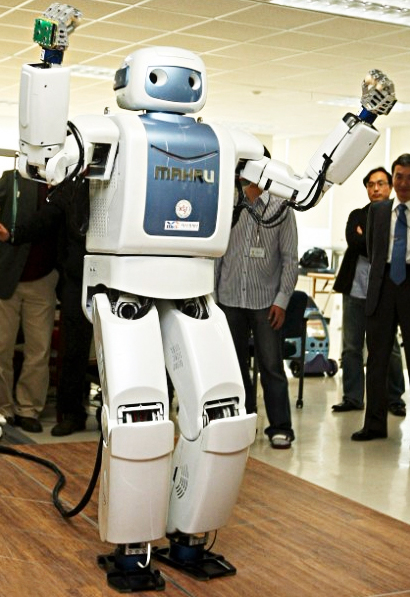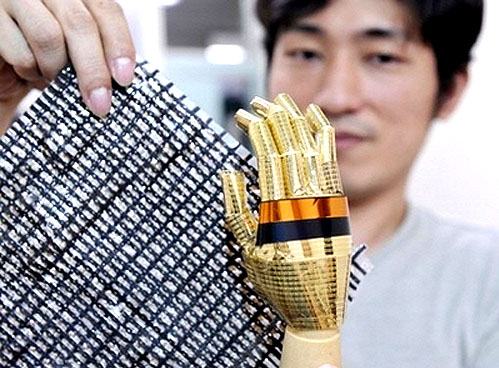
What would it be like to have a robotic domestic servant? Imagine, one that could help with keeping the house clean, vacuuming, washing dishes, fixing drinks. Maybe even one that could cook for you (or at least fix a microwave meal and bring it to you). While realizing this may be quite a few years away, robotic research continues to cross new thresholds, bring that reality just a bit closer.
In pushing towards that goal, South Korean researchers have created a robot that looks like something you would see from The Jetsons, but Mahru the robot is certainly not fiction. The Korean Institute of Science and Technology (KIST) created Mahru as part of a state funded $200,000 project, and it performs quite well, both from a practical standpoint and an entertainment one. Built to be functional, the bipedal and tethered white and blue robot is appears to be quite friendly.
Mahru is not intimidating in its stature, since it stands 4 foot and 9 inches tall. Weighing 148 pounds, there is no fear of the robot crashing through the floor either. Onboard Mahru incorporates such goodies as advanced motion capture systems and sensors. By using these sensors, capture systems, and actuators Mahru has developed a lot of abilities, including:
-
Watch and mimic human beings when they do something physical, such as waving their arms or other simple gestures.
-
When out for a stroll, it is able to avoid obstacles with its hands.
-
Recognize human voices
-
Walk to a specific place on demand
-
Respond to simple phrases like "What is your name?" and "How tall are you?"
-
Differentiate between faces and objects
-
Deliver items to humans on command
-
Express scents using two different kinds of scents (hopefully being scared is not one of the scented emotions)
-
Cut a rug on the dance floor
Mahru is targeted at being a household domestic servant, and in this area he faces some competition from MIT's Domo, among others. However, KIST researchers are confident that by the year's end Mahru will be performing simple chores such as serving drinks on command. KIST believes that commercial domestic robotic help along the lines of Mahru could be available as soon as a decade from now. Not a moment too soon.

